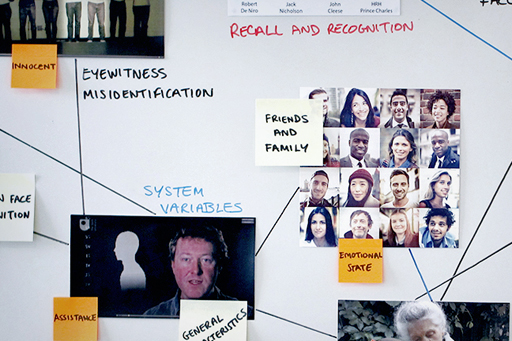3.2 Face-recognition disorders

Faces are an extremely important part of our world. They allow us to distinguish our friends and family from people we don’t know, to recognise many hundreds of people even if they change their appearance, and also to determine someone’s emotional state.
You have seen that this expertise does not extend to an upside-down face and neither does it mean we can recognise someone with whom we are unfamiliar and have only seen briefly once before. This is a problem for the criminal justice system, as it means that even our extraordinary ability to recognise faces may not be up to the task faced by an eyewitness.
Our highly developed face-recognition skills also mean that faces tend to be recognised in a different way to other objects, using different cognitive processes and different parts of the brain. Psychologists think that the area of the brain known as the ‘fusiform gyrus’, is activated when recognising a face but not when recognising other objects. That means that if this part of the brain becomes damaged, the person could be left being able to recognise objects but not being able to recognise faces. This condition is known as ‘prosopagnosia’ or ‘face blindness’. It is thought that as well as being caused by damage to the brain, this condition can be congenital and may affect up to 2.5% of the population – including Brad Pitt and the famous neuroscientist Oliver Sacks.
Next, you will hear what it is like to live with prosopagnosia from someone with the condition.
